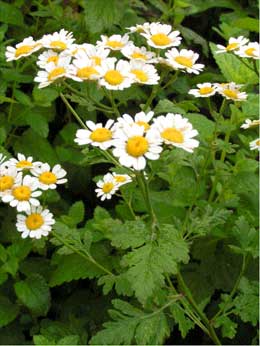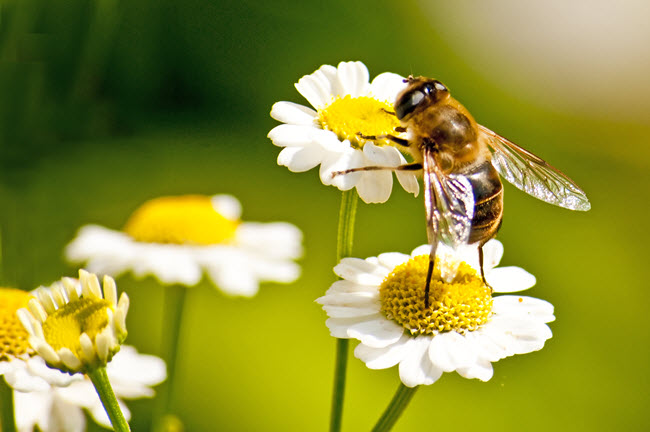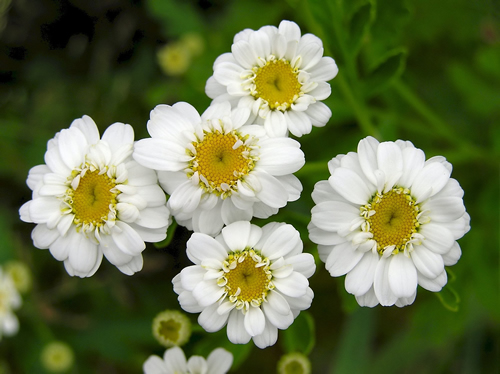Psyllium originates from the husks of the seeds of Plantago Ovata. Plantago Ovata means literally “horse flower” and refers to the shape of the seed. The word can be found in the Persian language as a combination of the words “asb” and “ghol.”
The popular fiber source is also referred to as Ispaghula. The genus name of this herb is Plantago. Plantago Ovata grows to an average height of 30 to 46 cm. Numerous, tiny, white, flowering shoots arise from the base of the plant. These flowers typically appear about 60 days after planting. Tiny capsules hold the seeds that open when the plant is mature.
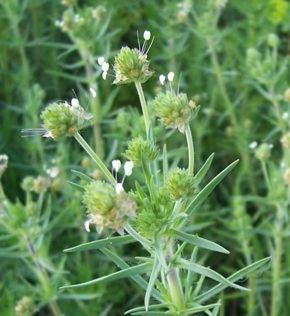
Mucilage Content
Psyllium Plantago is produced in large quantities because of it high mucilage content.
Experts often use the term psyllium husk synonymously with Plantago seed mucilage.
Mucilage is described as gelling agents that are clear and colorless.
Most of the mucilage obtained comes from the seed coat, which is milled and ground in order to obtain the gelling agent.
Manufacturers can generally obtain 25 percent of the total weight of the seed coat in mucilage.
The volume of the seed coat expands 10 times, after it absorbs the water and forms a gel like substance.
Experts refer to the seed coat as hydrophilic because it attracts and binds to water molecules.
Plant Species
There are over 200 species in the Plantago species. Plantago psyllium is produced in European countries, as well as, India, Pakistan, and the Soviet Union. India produces most of the world’s psyllium and exports. The plants are also commonly known as plantains.
Although, the plants are not synonymous with the banana called plantain. The plants are herbaceous. The leaves possess three to five veins. Plantago or plantains are often the food source of the butterfly and moth.
The plants are indigenous to almost every region of the world. Explorers may find the plant in America, Asia, Australia, Africa, Europe and New Zealand. The plant thrives in moist to wet areas. Plantago are often found in seepages or bogs. Though often found in alpine and coastal areas, they are frequently seen on the side of the road.
History and Origin of Usage of Psyllium Plantago
Psyllium plantago has been used historically as a diuretic, astringent, anti-inflammatory, anti-histamine, anti-toxic, antimicrobial, demulcent, styptic, laxative and an expectorant. The herb may also be applied topically for poison ivy, minor sores, insect bites, and boils. When the herb is ingested internally, it relieves coughs and bronchitis.
Urban Legends and Myths Associated with Psyllium Plantago
Other physicians and experts debate the validity of colon cleansing using detoxification diets that may include psyllium plantago. Physicians are stating that there is no conclusive evidence that these diets are effective. Physicians compare the colon to a self-cleaning system that will discard wastes on a periodic basis, if the proper foods are consumed.
However, other individuals argue that toxins build up over time, if the colon does not discard the contents properly. Therefore, the effectiveness of colon cleansing is up for debate. In the meantime, multiple individuals including celebrities participate in the practice to achieve a glowing complexion. Concerned individuals should consult a physician prior to cleansing the colon.
Psyllium Plantago has often been cited as curing snakebite in common folklore. But its validity has not been proven, conclusively.
Uses for Psyllium Plantago
According to a recent study 88 percent of Americans are not aware of the daily recommended allowance of fiber. Furthermore, only 10 percent of Americans get the recommended amount of fiber in their diets daily. Columbia Institute of Human Nutrition found this study to be true. In general, the average American only consumes about half of the daily recommended allowance of fiber.
American education regarding fiber is virtually non-existent in nearly half of Americans. A recent poll indicated American fiber miseducation. In 2005, nearly 50 percent of Americans believed that steak was high in fiber. Steak actually contains little or no fiber. One in five people do not know how much fiber they consume daily and 60 percent have never spoken to a physician about fiber.
A typical individual will gain the recommended daily fiber from the following sources
- Dried Beans
- Peas
- Green Beans
- Cauliflower
- Flax Seed
Those who cannot consume these foods that are high in fiber should seek alternative sources. Psyllium is often suggested as a natural source of fiber.
Because of Psyllium’s high dietary fiber content, the plant is often used in laxatives. Popular products include Metamucil and Serutan. The plant has also been documented as a contributor in lowering cholesterol levels. Experts have cited some significant effects on the lowering of cholesterol and low-density lipoprotein levels. Manufacturers of cereals have often used this plant to produce cereals with high fiber and lower cholesterol levels. Heartwise cereals are an example of the types of cereals that contain the fiber-rich plant.
Other products that contain psyllium include the following
- Bran Buds cereal
- Fiberall
- Effersyllium
- Fybogel
- Flea Seed
- Hydrocil
- Ispaghula
- Ispaghula seed
- Konsyl
- Lunelax
- • Minolest
- Perdiem
- Plantago Arenaria
- Psyllion
- Psyllios
- Psyllium Husk
- Psyllium Seed
- Yerba Prima
- Regulan
Based on scientific theories, other popular uses for Psyllium Plantago include the following
- Abrasions
- Abscesses
- Atherosclerosis (hardening of the arteries)
- Bladder disorders (cystitis)
- Bleeding
- Blisters
- Boils
- Bronchitis
- Burns
- Cancer
- Cough
- Demulcent
- Diverticular disease
- Duodenal ulcer
- Dysentery
- Excessive menstrual bleeding
- Eyewash
- Fecal (stool) incontinence
- Gallbladder disease
- Gallstones
- Gout
- Hearing damage
- Heavy menstrual bleeding
- High blood pressure
- Incontinence
- Insect bites and stings
- Intestinal ulcers
- Liver disorders
- Nose and throat irritation
- Parasites
- Poison ivy rash
- Psoriasis
- Radiation-induced colitis/diarrhea
- Skin soothing
- Sprains
- Stomach ulcer
- Urethritis
- Wound healing (used on the skin)
Most people associate psyllium use with alleviating constipation. However, there are some other benefits to psyllium use as well. As mentioned in the list it is also useful in the treatment of ulcerative colitis and reduction of cholesterol. Psyllium may also reduce bleeding associated with hemorrhoids. Patients seeking relief from hemorrhoids should consume the product a minimum of 40 days. Oddly enough, experts are now studying the effectiveness of psyllium in patients suffering from diarrhea. Since psyllium improves stool bulking, it may also assist with problems associated with diarrhea. When psyllium expands and absorbs the water in the colon, the stool mass increases. This process allows the waste to pass from the body easily. Psyllium helps to keep the colon in balance by providing a food source for beneficial microbes to thrive. Less desirable microbes will become less prevalent in an environment that contains a healthy source of fiber.
The plant may also relieve symptoms of inflammatory bowel disease or irritable bowel syndrome. However, more research must be done before the results are conclusive. Many physicians will recommend psyllium for colonoscopy preparation. A colonoscopy will test for irritable syndrome, colon cancer, and other colon related ailments. Psyllium is often present in the preparation enema before the exam. Patients are advised to completely empty the colon before undergoing the procedure. This process will allow the physician to view the colon lining to detect abnormal growths.
Experts are studying the benefits of psyllium rich diets in the cancer patients. Some earlier research has indicated that psyllium can, in fact, prevent colon cancer. More studies are being conducted to prove this finding conclusively. Studies have also been conducted to determine the effects of psyllium on blood sugar levels. Researchers do not have conclusive evidence, but it is believed to balance or regulate blood sugar levels in patients who suffer from fluctuations.
Experts also speculate that psyllium can assist with dilating the cervix to induce labor. While evidence indicates that psyllium does operate in this manner, further research must be conducted to prove this finding conclusively. Elevated blood sugar and lipid levels may play a role in obesity in children and adults. Recent evidence shows that psyllium may improve blood sugar and lipid levels. Therefore, psyllium may regulate the weight of children. More studies are being conducted to clarify the effects of psyllium on weight control in children and adults.
When psyllium is used externally, the plant can remove toxins from the body and reduce skin irritations and inflammations.
Variations of Psyllium Plantago
Plantago seed may come in several varieties, such as black, French or Spanish varieties. Plantago Ovata may be referred to as white or blonde psyllium.
Active Ingredients in Psyllium Plantago
The active ingredients found in psyllium supplements are dextrose, psyllium and psyllium husks. Most of the supplements are all natural. The dextrose is a sugar source.
Popular Forms of Psyllium Plantago
Psyllium is available in several forms. Each individual should find the source of fiber that is best for their system.
Several forms of psyllium are listed below
Capsule
Wafer
Tea
Tincture
Syrup
Salads
Green Sauce
Other Leafy Vegetables
Psyllium may also be consumed by patients as a supplement in powder form. A daily dosage of 7 grams taken with adequate amount of water is typically recommended. Psyllium may also be found in several cereals as a fiber source.
How Psyllium Plantago is Processed
Mucilage present in Plantago Ovata is obtained by grinding the husk or the seed coats. Asian Indians utilize this process to obtain mucilage from Psyllium Plantago. Each layer of each seed contains approximately 25 to 35 percent mucilage. The thin white membrane of the psyllium seed is the origin of the mucilage.
The production of mucilage involves a detailed and elaborate seed cleaning process. The psyllium husks are produced from raw seeds through the process of dehusking. Once the raw seeds are cleaned and polished, each of them are sent to special grinding mills to remove the husks of the seeds. The remaining material, after the dehusking process, consists of husk and kernel. This material is put through a massive sieve in order to remove the kernel. Blowers remove any remaining impurities from the husk. The process yields pure husks. Pure husks are the portion of psyllium plantago that contains the fiber material desired by manufacturers. The popular fiber source is available in a pill form, powder form or in the form of a cereal.
Psyllium Plantago Research
Psyllium research has been conducted at universities, such as Arizona and Washington State. The American Journal of Clinical Nutrition concludes that cereals rich in fiber are an effective part of a treatment for moderate hypercholesterolemia. Studies also show that when psyllium is combined with food products, it reduces blood glucose levels associated with diabetes. Though the long term effects of psyllium are not conclusive, the short term benefits are advantageous to most individuals.
Recommended Dosage for Psyllium Plantago
Adults are recommended to have a daily dietary fiber intake of 20 to 35 grams. This translates to 10 to 13 grams per 1,000 calories consumed each day. Psyllium is a recommended source of fiber. Psyllium must be taken with sufficient amounts of water in order to prevent obstruction of the bowel. Most physicians instruct patients to consume between 2.2 to 45 grams of psyllium internally. The typical intake of psyllium husks is 1 teaspoon (5 grams), three times per day to treat constipation. Some experts also suggest taking 2 to 6 teaspoons (10 to 30 grams) of whole seeds three times per day. Adults are recommended to stir the seeds or powder into a glass of water or juice. The mixture should be consumed before it thickens. Experts recommend consuming psyllium before meals. Always follow the instructions on the label in order to avoid any unpredictable results.
Children are instructed to take between 3.4 to 16 grams by mouth daily. However, more research is being conducted to establish the long term effects of psyllium in children’s diets.
Patients who know they cannot obtain the recommended daily allowance of fiber in their foods should seek a psyllium supplement. Psyllium supplements will allow individuals to achieve the recommended daily allowance of fiber without consuming the fruits and vegetables often needed for a healthy colon.
Potential Side Effects
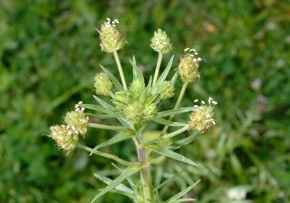
Some individuals may experience allergic reactions when psyllium is contained in foods.
Allergic reactions may include anaphylaxis.
Some individuals, although rare, have reported an obstruction of the gastrointestinal tract.
This typically occurs in patients who have received bowel surgeries or have anatomic abnormalities.
Obstructions may also occur if not enough water is consumed with products containing psyllium.
Patients afflicted with Parkinson’s disease have reported esophageal obstruction. Therefore, these patients should consult a physician prior to consumption. Patients who are diabetic should also consume psyllium under the advisement of a physician. Blood sugar levels may drop dramatically and cause other complications. Patients who experience chest pain, vomiting, or difficulty swallowing or breathing after consuming psyllium should seek medical attention.
Pregnant individuals should consume psyllium with caution. Psyllium is deemed safe during all thre trimesters of pregnancy. Although, psyllium is approved during pregnancy and breastfeeding, individuals suffering from complications in pregnancy should consult a physician.
Psyllium may delay bowel movements. The plant may also reduce the absorption of some drugs, as well as, herbs, vitamins, minerals, and supplements. Experts have cited instances of absorption problems with calcium, iron, zinc and vitamin B12. Physicians recommend taking psyllium and other drugs a few hours apart to minimize any potential interactions.
Patients should exercise caution when using psyllium with other laxatives, such as senna. Expect an increase in fat excretion if psyllium and chitosan are taken together.
Physicians also recommend that psyllium be consumed separate of warfarin or Coumadin until further research is conducted. Currently, no side effects have been documented. However, physicians prefer to err on the side of caution.
Patients should seek advisement of a physician before taking psyllium with the following drugs or herbs
- Anticoagulants
- Antidepressants
- Anti-Gout Agents
- Anti-inflammatory Agents
- Diuretics
- Salicylates
- Tetracyclines
- Nitrofurantoin
- Insulin
- Lithium
- Digoxin
Famous People who Use Psyllium Plantago
Individuals who are on the Atkins diet may consume Psyllium Husks to boost their dietary intake of fiber. The Atkins diet allows celebrities and others to consume an unlimited amount of protein, including meat, eggs, and cheese.
The diet limits foods that are high in sugar. These foods include carbohydrates such as, pasta, bread and fruit. The diet may also limit vegetable intake with a high glycemic index for a period of time as well. Because the diet is high in protein and limits the intake of carbohydrates, fruits, and vegetables, many individuals on the diet do not receive their daily allowance of fiber.
Celebrities and others are encouraged to take a supplement to counteract this deficiency. Individuals who participate in the diet are encouraged to take 1 teaspoon of psyllium plantago per day.
Celebrities who have tried the Atkins diet include the following
- Jennifer Anniston
- Catherine Zeta-Jones
- Angelina Jolie
- Brad Pitt
- Renee Zellweger
- Cameron Diaz
- L.L. Cool J
- Gerri Halliwell
- Robbie Williams
- Stevie Nicks
- Dennis Franz
Celebrities and others should keep in mind that psyllium is a fiber source and does not contain nutritional value. The diet works because individuals feel full and consume less food. Participants in the Atkins diet should be aware that long term elimination of fruits and vegetables may result in long term health problems.
Where the Product is Purchased
Psyllium is available through a variety of stores online and stores similar to GNC.
Product Costs and Discounts
Psyllium costs range based upon the form, the amount of the product, and the store from which it is purchased. Individuals can typically obtain psyllium in a pill form at a retail price between $10 and $20 dollars. The consumer will typically receive about 180 capsules with the purchase. Psyllium is also available in powder form.
The powder may sometime cost slightly more than the pill because of the number of servings that is included. The consumer can obtain 13.6 oz. of psyllium powder for just under $20 retail.
Discounts are offered to consumers in stores and via various websites. Some of the discounts may be as much as 50 percent depending upon the store. Consumers are advised to shop around online to determine the best deal prior to purchasing a psyllium product.

